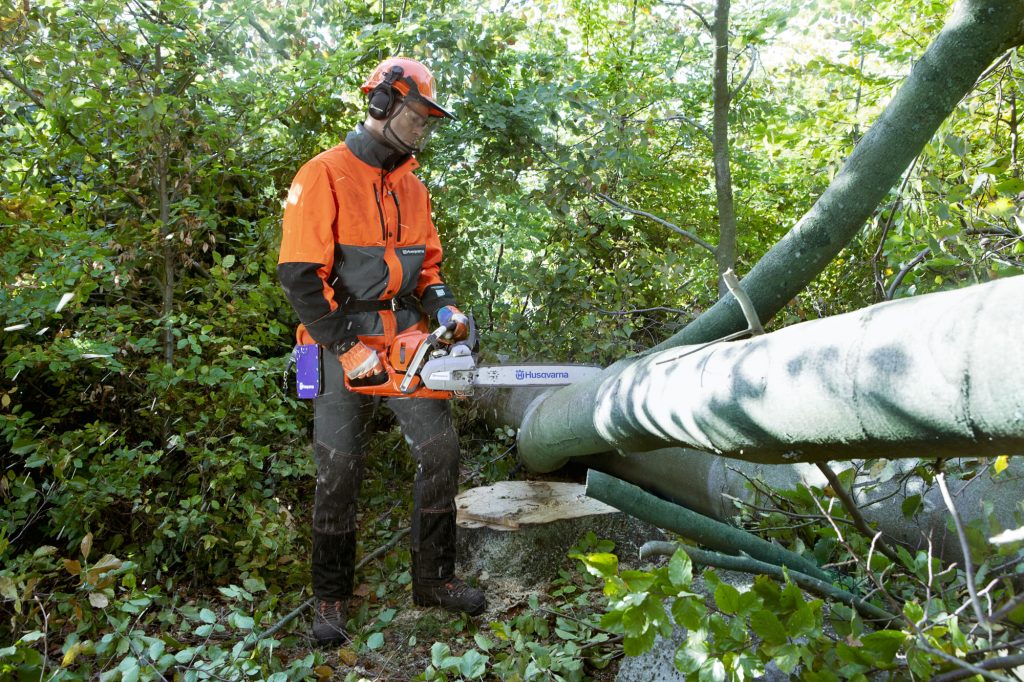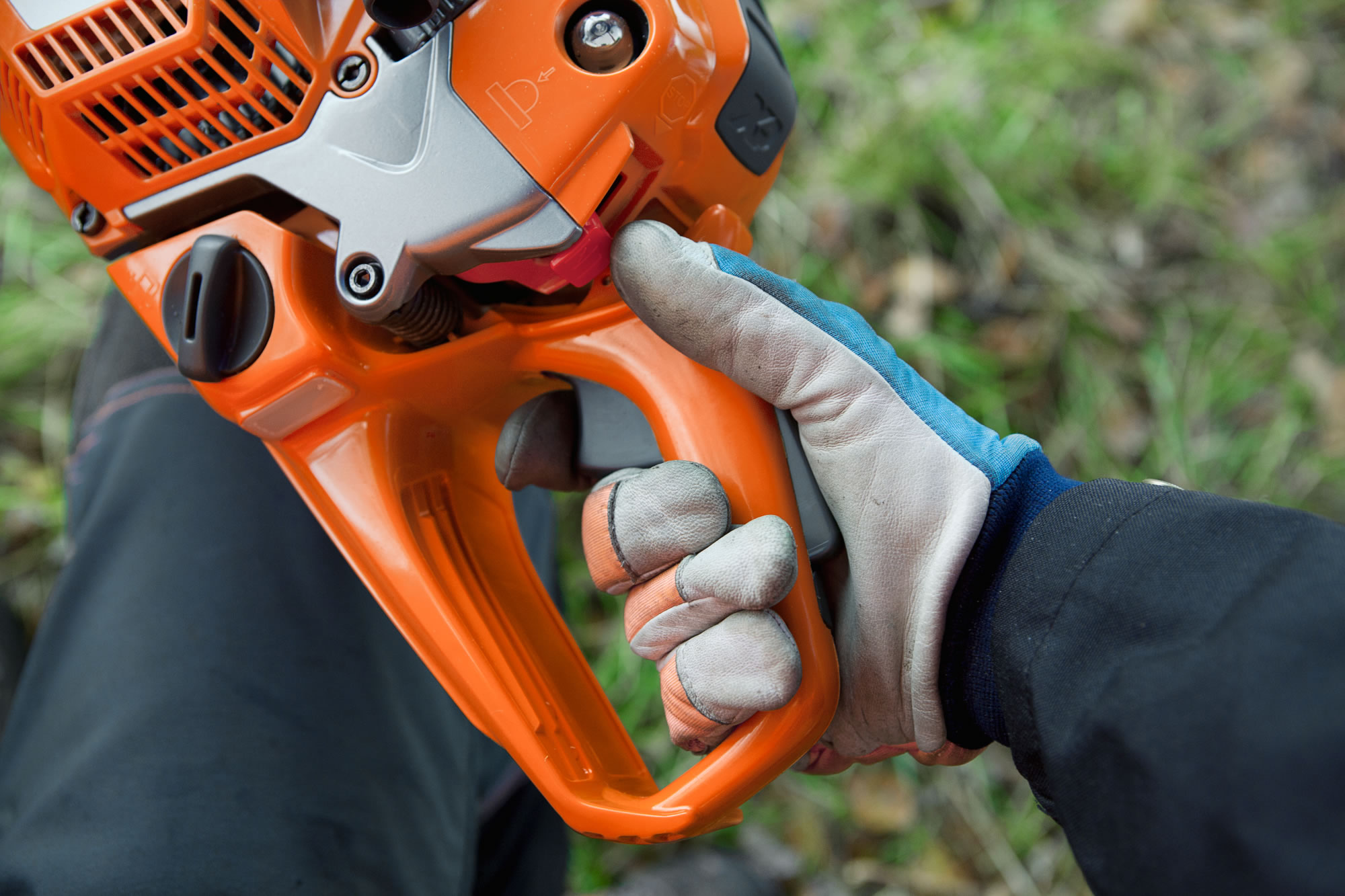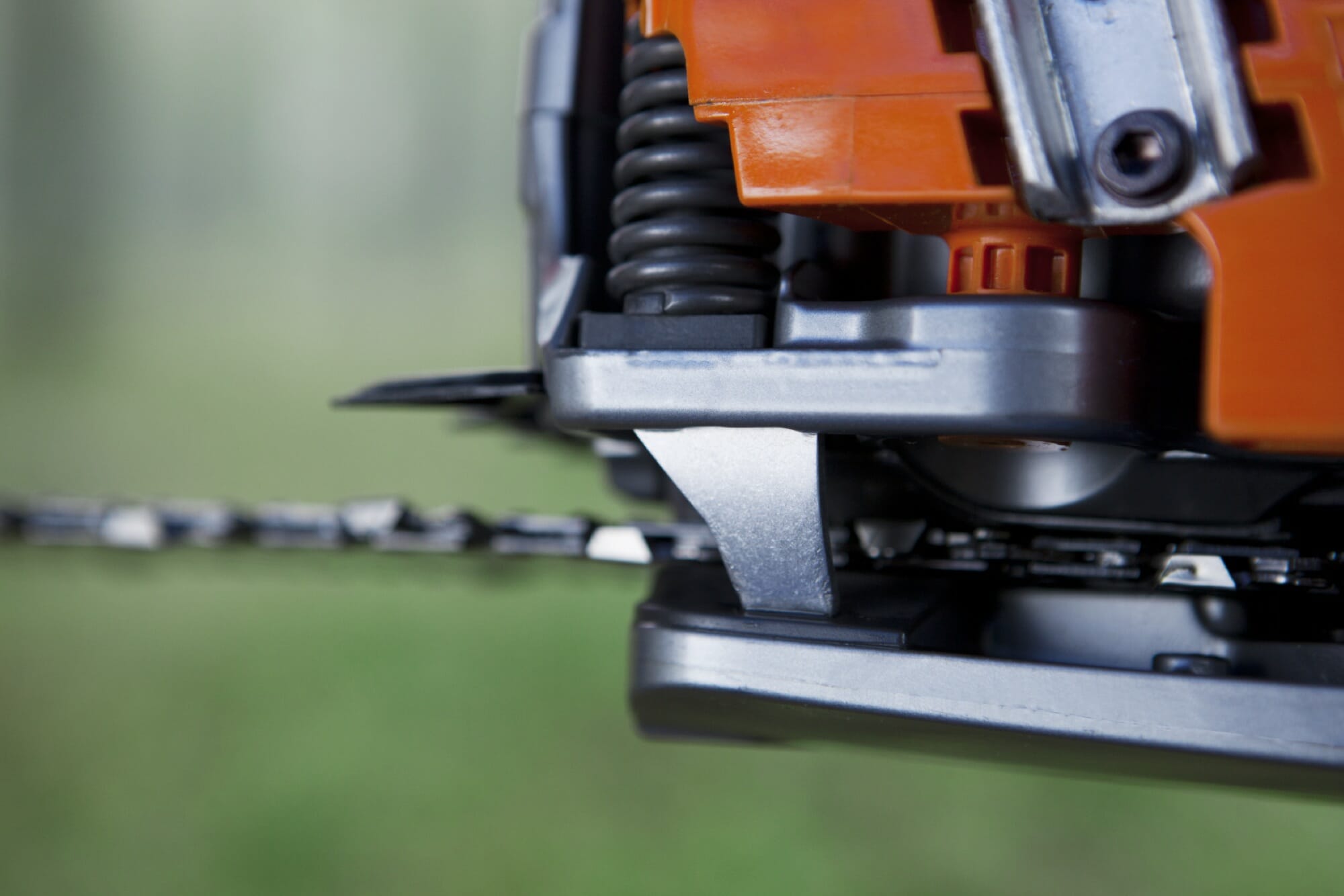Chainsaw safety basics
Working with a chainsaw involves many different work situations with both simple and more complicated steps. The chainsaw is a very effective tool, but it can also be dangerous if used improperly. In order to avoid accidents and unnecessary strain, you should use the correct working techniques, the best possible safety equipment and a modern chainsaw with functioning safety features.
Take a chainsaw course for safety’s sake!
There are several companies and organizations that offer courses in chainsaw use and safety. Find out what rules apply in your country.
Practising on your own may compromise your safety. If you learn the wrong technique, the risk of accidents rises significantly.
Overview
Basic rules for working with a chainsaw
THE THUMB GRIP Keep a steady grip on both handles on the saw. Thumbs and fingers must be completely wrapped around the handles. It is very important to hold the thumb of your left hand under the front handle in order to reduce the force of a possible kickback.
CLOSE CONTACT Do not be afraid of the saw. Hold it close to your body for better balance and to make the saw feel less heavy.
BALANCE Stand with your feet apart. To achieve the best possible balance, put your left foot slightly in front of your right.
BEND YOUR KNEES Spare your back. Do not work with a curved spine, bend your knees instead when working in low positions.
MOVING / TRANSPORT The chain must not be rotating when you are moving to another spot. When moving in several steps, you should activate the chain brake or turn off the engine. When you move a longer distance or when transporting, you should fit the guide bar guard.
SAFETY DISTANCE Make sure that no one is closer to you than 3 – 5 metres when working with a chainsaw. During tree felling, a greater safety distance is required.
Avoid working alone
If there are two or more of you, you can help each other if something were to happen. If you must work alone, you should always:
- Tell someone where you will be during the day. Give your contact person (a designated person) your route and your location, e.g. with GPS coordinates
- Always carry a mobile phone or communications radio and keep in regular contact with your contact person at least every three hours
- Always have a transport vehicle in the forest and always park the vehicle so that you can quickly leave the area
- Observe all other safety procedures carefully
Beware of kickbacks
The kickback zone is the upper part of the nose of the guide bar. Sawing with this part of the guide bar poses a significant risk for a kickback, in which the chain will grip the timber and the saw and blade are thrown backward and upwards by the force of the rotating chain. A kickback can be very dangerous and you need to understand:
- Kickback can occur during most work procedures if the saw is not handled carefully. This is why it is essential for you to learn and use correct saw technique.
- Always use a chainsaw with a working chain brake.
- Thumbs and fingers must be completely wrapped around the handles. Always keep your left thumb under the front handle when you use the saw to catch the saw in case of kickback.
Kickback risks when preparing for felling
Before felling, there is a kickback risk when pruning and when you cut down shrubs and small trees that are in the way when felling. Cut with a pulling chain (using the underside of the guide bar) when pruning. Never saw above shoulder height.
Kickback risks when felling and crosscutting
When felling and crosscutting, you may want to bore the guide bar into the trunk. There is a kickback risk if you saw carelessly with the guide bar’s kickback zone directly facing the trunk. You can avoid the greatest kickback risk simply by never putting the nose of the guide bar directly against the wood. The bore cutting technique, however, requires sawing with the nose of the guide bar. If using this technique, make sure you understand how to perform it properly and in a safe way.
Kickback risks when limbing
Observe caution when limbing. The nose of the guide bar can hit underlying logs, stumps, hidden branches and ends of logs, causing a kickback.
Overview
Chainsaw safety requirements
To achieve a safe working situation a modern chainsaw must be fitted with the following safety features. Remember to regularly inspect the safety features on the saw and always make sure you have a sharp and properly filed chain. If the safety features do not function properly, contact your nearest dealer or chainsaw repair shop.
Do not use the chainsaw if any of these features are absent or not working.








